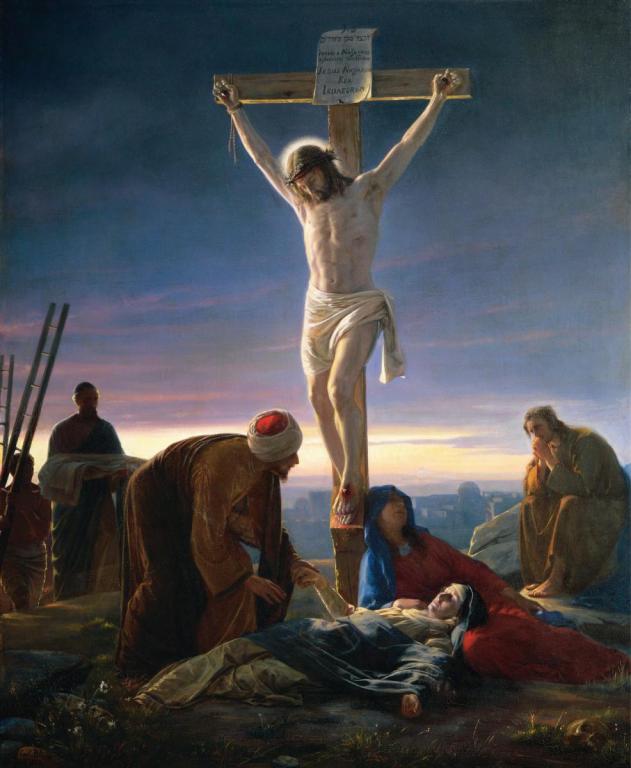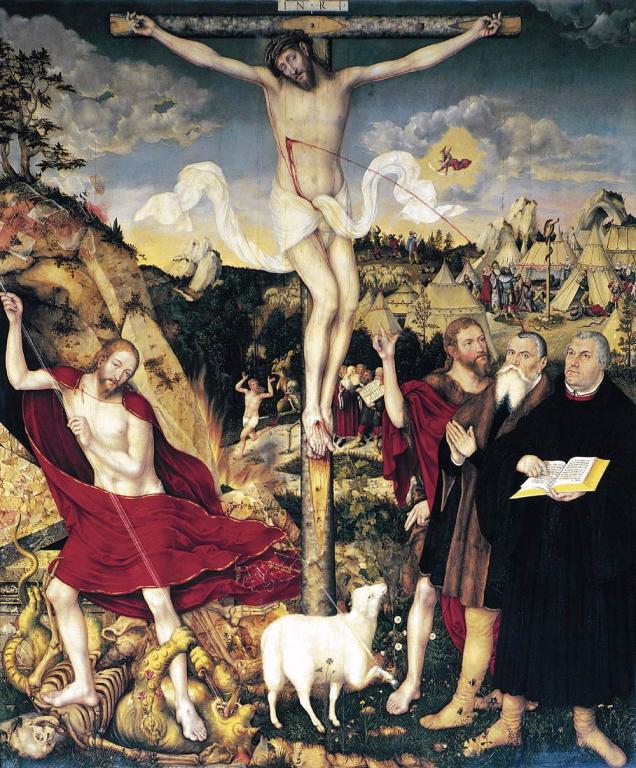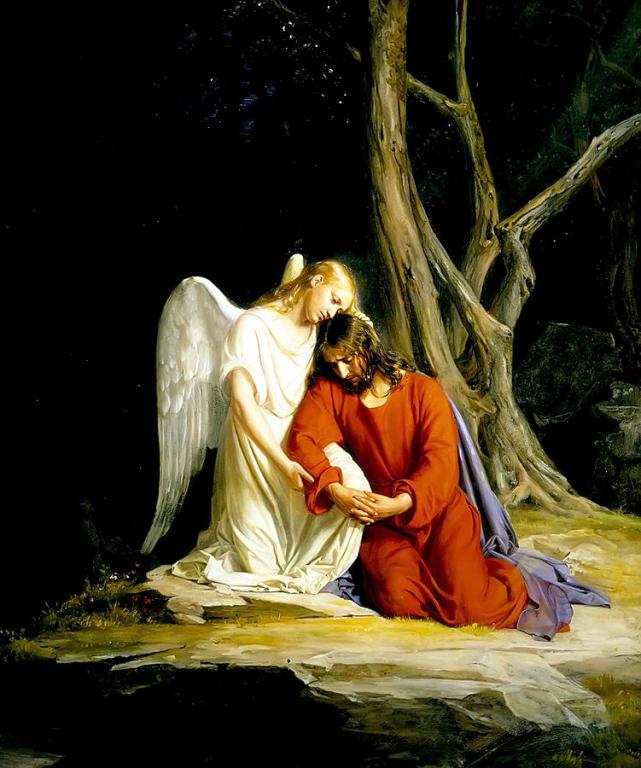Early Protestant Antipathy Towards Art (+ Iconoclasm)
Summary
Since the middle of the 16th century religious art had come entirely to an end in all the Protestant parts of Germany . . . Nothing but sectarian narrowness could deny that German . . . art stood higher before the Reformation than after it. For nearly two centuries architecture, sculpture, and painting produced nothing more in Germany that could be compared with the creations . . . immediately before . . . the Schism in the Church. (Janssen, XI, 50-51)
Hans Holbein the younger, one of the greatest painters of all ages, was obliged to undertake house painters’ work, and to paint Coats of arms. in order to make a living . . . In consequence of being thrown out of work he saw himself compelled to migrate to England . . . ‘The art of Christian painting,’ Albert Durer complains in a pamphlet addressed to Wilibald Pirkheimer, ‘is greatly despised among us Germans nowadays by many people, and they say it tends to produce idolatry.’ (Janssen, IV, 165)
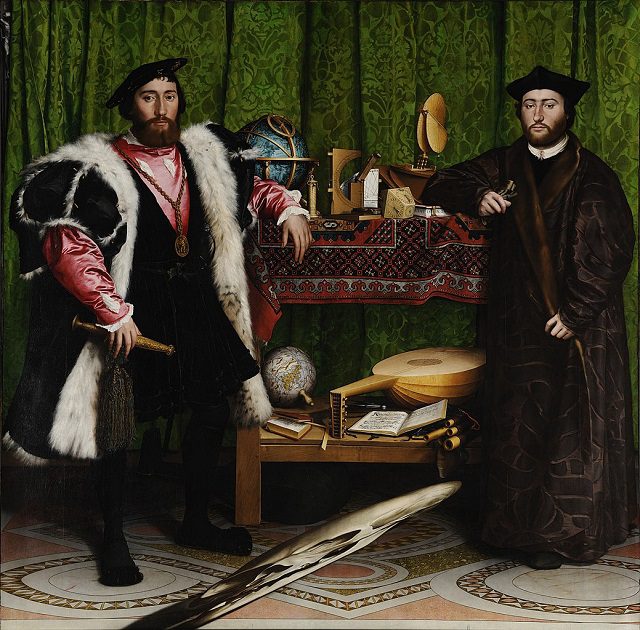
A popular history of art summarizes the Protestant Revolt’s detrimental influence:
In the northern countries, in Germany, Holland and England, artists were confronted with a much more real crisis . . . whether painting could and should continue at all. The great crisis was brought about by the Reformation. Many Protestants objected to pictures or statues of saints in churches and regarded them as a sign of Popish idolatry . . .
We can witness the effect of this crisis in the career of the greatest German painter of this generation . . . Hans Holbein the Younger (1497-1543) . . . In 1526 he left Switzerland for England . . . ‘The arts here are freezing,’ Erasmus wrote commending the painter to his friends . . . When Holbein had left the German-speaking countries painting there began to decline to a frightening extent, and when Holbein died the arts were in a similar plight in England. In fact, the only branch of painting there that survived the Reformation was that of portrait painting which Holbein had so firmly established . . .
There was only one Protestant country in Europe where art fully survived the crisis of the Reformation – that was the Netherlands . . . Artists . . . specialized in all those types of subject-matter to which the Protestant Church could raise no objections . . . [e.g., still-lifes]
The more the Protestants preached against outward show in the churches, the more eager did the Roman Church become to enlist the power of the artist. Thus the Reformation . . . also had an indirect effect on the development of Baroque. (E. H. Gombrich, The Story of Art, London: Phaidon, revised 11th edition, 1966, 274, 277, 279, 326)
Preserved Smith provides an interesting insight:
Even when the Reformation was not consciously opposed to art, it shoved it aside as a distraction from the real business of life. Thus it has come about in Protestant lands that the public regards art as either a ‘business’ or an ‘education.’ (Smith, 215)
In deciding what was “pure” Calvin and his legatees made themselves silly:
Reformed churches would not permit organs . . . It filled the church with ornamental and non-Scriptural sound . . . an instrument of the elaboration and clutter which their cleansing stream of simplicity was washing away . . . In Calvinist countries, except Holland . . . they preferred to have no organs . . . There is a story of the organist of . . . Zurich weeping as he watched the axes smashing his great organ . . . All the English organs were sold or demolished again in 1644 . . . (Chadwick, 438-439)
Fortunately for the history of music, Bach was a Lutheran instead of a Calvinist!
Another Puritan, Dr. Reynolds of Oxford, was the scourge of Elizabethan theatre which . . . he wished to ban completely. The Puritans forced the theatres to move from . . . London to Southwark. If they had triumphed nationally, many of the greatest works of English literature would never have been written . . . Shakespeare, Jonson and Webster, no doubt, would have turned to other professions. (Paul Johnson, A History of the English People, New York: Harper & Row, Revised edition, 1985, 162)
In Calvin’s Geneva,
[T]he theater was denounced from the pulpit . . . attendance on plays was forbidden. (Huizinga, 171-172)
The Book of Discipline in Scotland forbade attendance at theaters. Calvin thoroughly disapproved of them, and even Luther considered them ‘fool’s work’ and at times dangerous. (Smith, 44)
Martin Luther: A Curious Mix
Luther himself was moderate in this regard:
I do not hold that the Gospel should destroy all the arts, as certain superstitious folk believe . . . The law of Moses forbade only the image of God. (Durant, 820)
On the other hand, however, Luther was most eager to trivialize and vulgarize art in commending ridiculous caricatures of Catholics as donkeys, etc.:
Wherever one goes one sees . . . caricatures of priests and monks” so that “one now experiences a feeling of disgust on seeing or hearing of a clerical person. (Janssen, XI, 56; LL, II, 674; Luther’s letter to Archbishop Albert of Mayence, June 2, 1525)
In 1526 Luther called on his disciples to:
. . . assail the . . . idolaters of the Roman Antichrist by means of painting. Cursed is he who remains idle in this matter, while he knows that he can do God a service. (Janssen, XI, 56)
This is typical of Luther’s unfortunate habit of disagreeing by means of slander, obscenity and mockery, rather than by reasonable discourse.
Protestant Iconoclasm (Are Artistic Images Idolatrous?)
The early Protestant antipathy towards art was most graphically displayed in their iconoclasm with regard to “images” in churches, which they considered idolatrous:
Reformers less human than Luther, less cautious than Calvin, preferred to outlaw religious painting and sculpture altogether, and to clear their churches of all ornament; ‘truth’ banished beauty as an infidel. In England, Scotland, Switzerland, and northern Germany the destruction was wholesale and indiscriminate; in France the Huguenots melted down the . . . shrines, and other vessels found in the churches . . . The demolition was brutal and barbarous. (Durant, 821)
Amongst the preachers of the new religious opinions there were multitudes who, like Wickliffe of old, denounced all arts and sciences as devil’s traps. Zwingli and his followers designated Christian art, within the churches at any rate, as a snare of the devil . . . They assumed a hostile attitude towards Christian art in general . . . Zwingli would not even tolerate the pictures of Christ. The Helvetian confession of faith, drawn up by Bullinger, rejected images of Christ as though they were pagan idols . . . In the Basle Church Regulations of the year 1529, introduced by Oecolampadius, it is said: God has ‘cursed all those who make images.’ William Farel went so far as to denounce the making of pictures and images as a sin against nature . . . Calvin called the setting-up of pictures and images in churches a . . . ‘miserable folly which had been the destruction of all piety on earth;’ it was also iniquitous to give representations of events from sacred history. Theodore Beza directed his fury especially against pictures of the Crucifixion, which he ‘abominated.’ He wished that ‘the Christian magistracy would reduce all pictures to powder.’ (Janssen, XI, 28-29)
Give Art for Christmas
One of the most successful Christmas presents–in the sense of being truly surprising and appreciated–that I have ever given was a work of art. We had just moved to the snowy tundra of Wisconsin and were missing our native Oklahoma. An art professor at Concordia Wisconsin where I was teaching, Gaylund Stone, had come there from a stint at a college in Oklahoma, where he had painted some landscapes. One of them was just of a tractor in a field, but he perfectly captured Oklahoma’s red dirt, big blue sky, and intense bright light of a hot summer day. That was Oklahoma! I bought the painting off Gaylund–who is still at Mequon, by the way–and gave it to my wife for Christmas. The gift was a big hit, and the painting became a treasured icon of our old home at our new home.
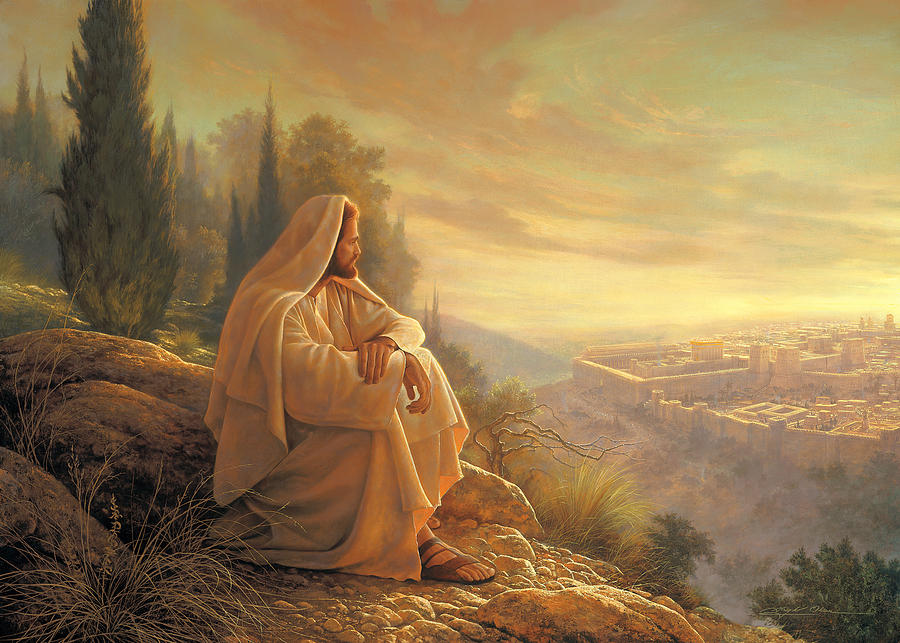
Works of art–whether paintings or literature or crafts–make outstanding Christmas presents. They are unique. They are personal. They are meaningful. And they typically show much more appreciation of the person you are getting them for than the typical electronic gadgets, fashion accessories, or gift cards that have become the norm.
Also, buying art–especially good art, Christian art–is a way to build up our culture. Christians interested in improving the aesthetic dimension of our increasingly ugly society tend to focus on the supply side: We need more Christian artists (filmmakers, entertainers, authors, painters, etc.). This is true. But we also need to focus on the demand side, and this is where all of us non-artistic types can make a major contribution. Ugliness, lack of creativity, and decadence pervade–in Hollywood, Silicon Valley, and Main Street–because this is what the public is buying. If the public were to hold out for something better, something better would appear. We do need Christian artists, but Christian artists need a market for their work.
In that spirit, I here offer you a very partial list of suggestions for your Christmas shopping consideration. These are all contemporary Christian artists of a Lutheran persuasion. I’m sure I am leaving out some good ones–please supplement this list with your own recommendations in the comments–but here are a few to get us started.
Literature
Obviously, books are always a great present. Check out Concordia Publishing House for some wonderful theological, Bible Study, and devotional resources. But I am emphasizing here literary art, including novels that are primarily to be read for pleasure and delight, though you will find them edifying as well. And while you should read and give classics, such as Bo Giertz’s Hammer of God, I want to introduce you to some contemporary Lutheran writers.
Mary J. Moerbe. I begin with my daughter! She has put out a volume of devotional verse entitled Ecclesial Poetry.
Poetry, tragically, is in a state of decline, with modern writers reducing our highest literary art to a set of formless, obscure puzzles. Mary’s poetry, though, is classic in form and as clear as a bell on a cold night. Her poetry is devotional, meditative, Biblical, and churchly. They are filled with penetrating insights and beautiful expressions.
And for the kids, get them one of Mary’s children books, such as How Can I Help?: God’s Calling for Kids, which teaches children about their vocations. Also, her blog Meet, Write, and Salutary will alert you to other Lutheran writers in addition to the few I list here.
Lars Walker. Lars is a longtime reader and sometimes commenter on this blog. And he is an extremely gifted novelist. I think of him as a Christian magical realist. He combines historical elements with high fantasy to great effect. He has written a saga of novels about Erling Skjalgsson, one of the first Vikings to embrace Christianity, and the stories are exciting and wondrous. I also like his novels about Epsom, Minnesota, especially Wolf Time, involving strange doings at a Lutheran college that has drifted to the liberal dark side. Another of his novels that combines realism, fantasy, and social satire is Death’s Door. Check out his website.
Frederic W. Baue. “Fritz” is a Renaissance man: An LCMS pastor. A notable guitarist and songwriter (note his recordings and YouTube presence–he composed What Is This Bread in the Lutheran Service Book). A fiction writer of highly textured stories. Try The Pilgrim, which is about Perry County, the Sixties, music, baseball, and saving faith. (Caution: This book is realistic when it comes to sin. It’s also realistic when it comes to God’s grace.) Here is his website.
There are lots more, from the symbolic tales of Michael L. McCoy to the thrillers of Ray Keating (imagine James Bond becoming a pastor). For a comprehensive list of contemporary Lutheran authors, see this list and follow the links. Also, you should know that Concordia Publishing House now has a whole line of fiction. One of their most popular authors is Katie Schuermann, whose Anthem of Zion series explores the dramas of small town parish life.
Visual Artists
Ad Crucem. This website is a treasure trove of, as they say, “Christian gifts, art, and collectibles.” You may recall a blog post I wrote about this collaboration of a number of Lutheran artists. In addition to Christian paintings and prints, you can find unique jewelry, cards, and Christmas decorations. See the Collections for various seasons of the church year and the works drawn from various Lutheran Christian artists, including the multi-media works of Kelly Klages, Judy Greenlees with her contemporary illuminated manuscripts, and Jonathan Mayer‘s liturgical arts.
Agnus Dei Liturgical Arts. A project of artist Kelly Schumacher, this site offers a wealth of original, magnificent work, particularly for churches. See the altarpieces, paintings, and sculptures. Some of them are breathtaking. Here, though, are some prints, some already framed, that are quite inexpensive and that would make great gifts.
Edward Riojas. An artist and illustrator of considerable chops, Ed Riojas has a substantial and wide-ranging body of work that you can see at his website. His prints are quite affordable (available through Ad Crucem, above). Notice that he, as well as other artists listed here, take commissions. So if you would like a particular kind of piece for your sanctuary, they would collaborate with you to create an original installation. (But before buying a Christmas present for your church, check with your pastor first.)
Cary Schwarz. He is a leatherworker whose saddles are exhibited like the fine art they are in places like the National Cowboy and Western Heritage Museum. The intricacy of these designs is staggeringly beautiful. Functional art is art too. He also makes items that are smaller than saddles that would make cool gifts.
There are lots more, Lutherans being more open to the arts than some other Christian traditions. For a more comprehensive list , go to Confessional Lutheran Ecclesiastical Art Resources.
The New Da Vinci: “The Savior of the World”
There is a newly discovered and authenticated painting by Leonardo da Vinci, a painting of Jesus Christ entitled “Savior of the World.”
It sold at auction Wednesday for $450,312,500–the highest priced painting ever sold at auction–to an unidentified buyer
. (The previous record was $179,364,992 for a Picasso.) In 1958 the painting was sold for the equivalent of $125.
It was known that Leonardo painted a picture of Jesus for the King of France between 1506 and 1513, but it had been presumed to be lost. A number of copies of the painting, however, were made by other artists. This painting was assumed to have been one of the copies.
Heavily over-painted, to cover damage to the image over the centuries, the painting was sent to an expert for restoration. When the added layers of paint were removed, it was evident that an early version of the painting showed Christ’s thumb in a different position, which the artist then changed. The restorer realized that a copy would not have originally changed the position of the thumb, and, indeed, all other copies preserve the new version. There are similar details showing the artist’s revision of the work that are not to be found in copies.
Also, the restorer found that the painting was created with multiple layers of very thin, translucent paint, which was Leonardo’s technique. X-rays also detected a handprint that had smeared different colors of paint together, another characteristic practice of Leonardo that is seldom found in other artists.
Other evidence includes the material (oil on walnut), the way the painting renders the ringlets of hair and the knot work of the robe, as well as the highly detailed hands–all of which are similar to other Leonardo da Vinci paintings.
After extensive further study, Leonardo experts authenticated the painting as one of only 16 surviving works by the Renaissance polymath.
Some art critics are disputing the authenticity of the painting on various stylistic grounds, but there is considerable weight of scholarship on the other side.
See the Wikipedia entry for the painting, which summarizes the evidence, the disputes, and the history of the work.
I would add that the face reminds me of other da Vinci faces, with the enigmatic expression reminding me of the “Mona Lisa.”
Painting a portrait of Jesus Christ Artist, one that is spiritually and theologically satisfying, is extremely difficult. How can an artist suggest the Incarnation? Typically, a painting of Jesus can go wrong by evoking His humanity, but missing any suggestion of His divinity. Thus we have lots of renditions of Jesus that try to show a compassionate human being, but end up being sentimental, maudlin, or effeminate.
But other artists go wrong in the other direction. Christ is depicted as divine, but not persuasively human. I think of the scowling but majestic paintings, so favored in Medieval and Renaissance art, of Christ Pantocrator, judging the world.
But the very best depictions of Christ evoke both His humanity and His divinity.
This one, in my opinion, measures up. Christ here is depicted not as an abstraction but with the realism of the Incarnation. And yet his expression is otherworldly, a mystery.
He gazes at us directly. One skeptic about the painting says that Leonardo never painted such face-on poses. Yes, but this is Jesus Christ, looking right through us, confronting us, seeing into our souls!
And he is holding a clear orb, symbolizing the world that He has saved. Another skeptic says that the orb mustn’t be by Leonardo because it isn’t realistic in distorting the light like a true crystal ball would. But this isn’t a crystal ball, but the universe, which Jesus holds in his hand! So the artist renders it mysteriously.
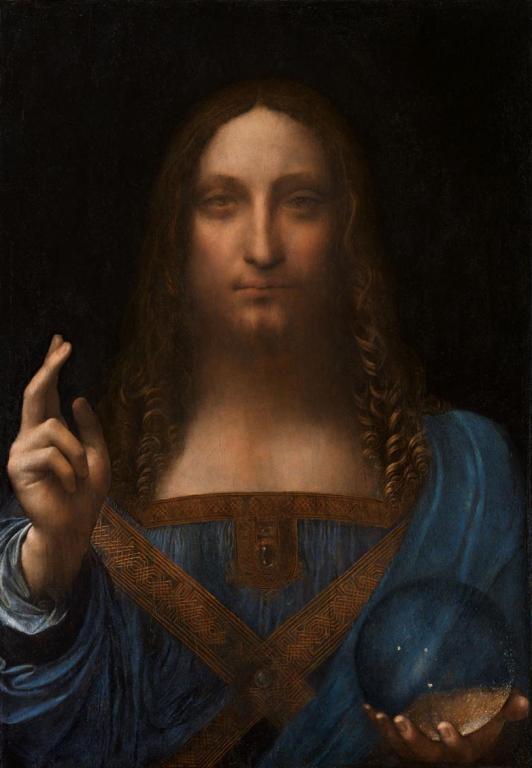
And the subject, as revealed by the title, intrigues me. (Titles add a word to the image and thus can convey their meanings.) Salvator Mundi. The Savior of the World.
We see here not Christ as judge, but Christ as Savior.
The Lutheran artist, Carl Bloch
In looking for an illustration to go with yesterday’s post Transfigured, I came across a painting on the subject that I ended up using. The artist was Carl Bloch, whom I subsequently learned was a 19th century Danish artist and a Lutheran. A painter of landscapes and portraits, he is best known for his paintings of scenes from the Bible, most notably a 23-painting series on the life of Christ.
And yet, though reportedly a devout Lutheran, Bloch’s paintings have been appropriated by the Mormons, to the point that his works have become part of the visual iconography of the Latter Day Saints, reproduced for generations in churches, publications, curriculum, and homes.
Bloch (1834-1890) was quite acclaimed in his day. His countryman Hans Christian Andersen wrote of his work, “What God has arched on solid rock will not be swept away!” And in a letter to the artist, Andersen said, “Through your art you add a new step to your Jacob-ladder into immortality.”
His work is highly realistic, while often suggesting Christ’s holiness with a halo, or an effect of light alluding to a halo, depicting the tangible historicity of what the Bible records. This accords with Lutheranism, which characteristically stresses that spiritual reality manifests itself in what is physical and material (God becoming a flesh-and-blood human being; the bread and wine of Communion being the Body and Blood of Christ; ordinary human vocations being the means by which God cares for His creation, etc.).
And yet, I find his religious paintings unsatisfying. They show what the scenes described in the Bible might have looked like. But they evoke no mystery, no theology. There is nothing sublime about them, suggesting neither the transcendence nor the immanence of God. Compare Bloch’s paintings to the work of other Lutheran artists such as Lucas Cranach, Albrecht Durer, or even the other 19th century Lutheran artist we blogged about, Fritz von Uhde.
Consider, for example, Bloch’s “Christ at the Cross”:
[Carl Bloch [Public domain], via Wikimedia Commons]
Is there the sense here that the man on the cross is dying for our sins, that He is bearing our griefs and iniquity and winning our salvation? Even the other figures in the painting seem more preoccupied with Mary’s swooning from sorrow, rather than attending to the crucified Christ.
Compare this to Cranach’s “Weimar Altarpiece”:
[Painting by Lucas Cranach ([1]) [Public domain], via Wikimedia Commons]
Cranach has worked in his own self-portrait, showing Christ’s blood streaming down on him. Jesus Christ Artist is saying that Jesus died for me! Next to him stands Luther, pointing to the Bible. Christ on the Cross is to be preached, and its meaning is communicated by God’s Word. Jesus is in the painting twice, as the dying savior and as the hero slaying the devil. At the base of the cross is the lamb of God that takes away the sin of the world. In the background are various scenes from the Old Testament, including the Bronze Serpent being lifted up in the wilderness.
Yes, I suspect that if we were to actually go in a time machine back to Calvary, the crucified Jesus would probably look like any other executed criminal, more like the plain style used by Bloch. We certainly wouldn’t see Lucas Cranach and Martin Luther standing by the Cross. Or see Jesus on the scene twice. But Cranach is showing not just a man on a cross but what all of this means. He is using art to explore the theology of the crucifixion and what it means for his own salvation.
Bloch will sometimes show more than a historical Bible illustration, but when he does so, he seems to stop at the emotional level, and that emotion is generally 19th century sentimentality. Consider this depiction of Christ in Gethsemane being comforted by an angel (“And there appeared to him an angel from heaven, strengthening him” [Luke 22:43]):
I guess it’s kind of moving, but I think it strikes the wrong chord. What do you think?
As for what Mormons see in these paintings–whether they see their theology reflected in them–I’m not sure. Perhaps some of you could enlighten me. Here is a discussion of Bloch’s popularity with Mormons, but there must be more to it than what this article describes. It might be simply that the Church of Latter Day Saints made use of an artistic series that surveyed the entire life of Christ, taking advantage of the unified portrait of Christ that is carried over throughout the 23 paintings, continuing to reuse them so that they acquired the power of association. Thus, generations of Mormons remember them from Sunday School pages, bulletin covers, church magazines, and sanctuary decorations.
For more details about Bloch and to see his paintings, go to this website devoted to his work. Should Lutherans reclaim this artist? I believe he is still popular in Denmark. He painted a number of altarpieces that you can still see in Danish Lutheran churches. Photographs from the website make me think that the ecclesiastical context of those works make them more powerful than just isolated paintings. But what do you think?
